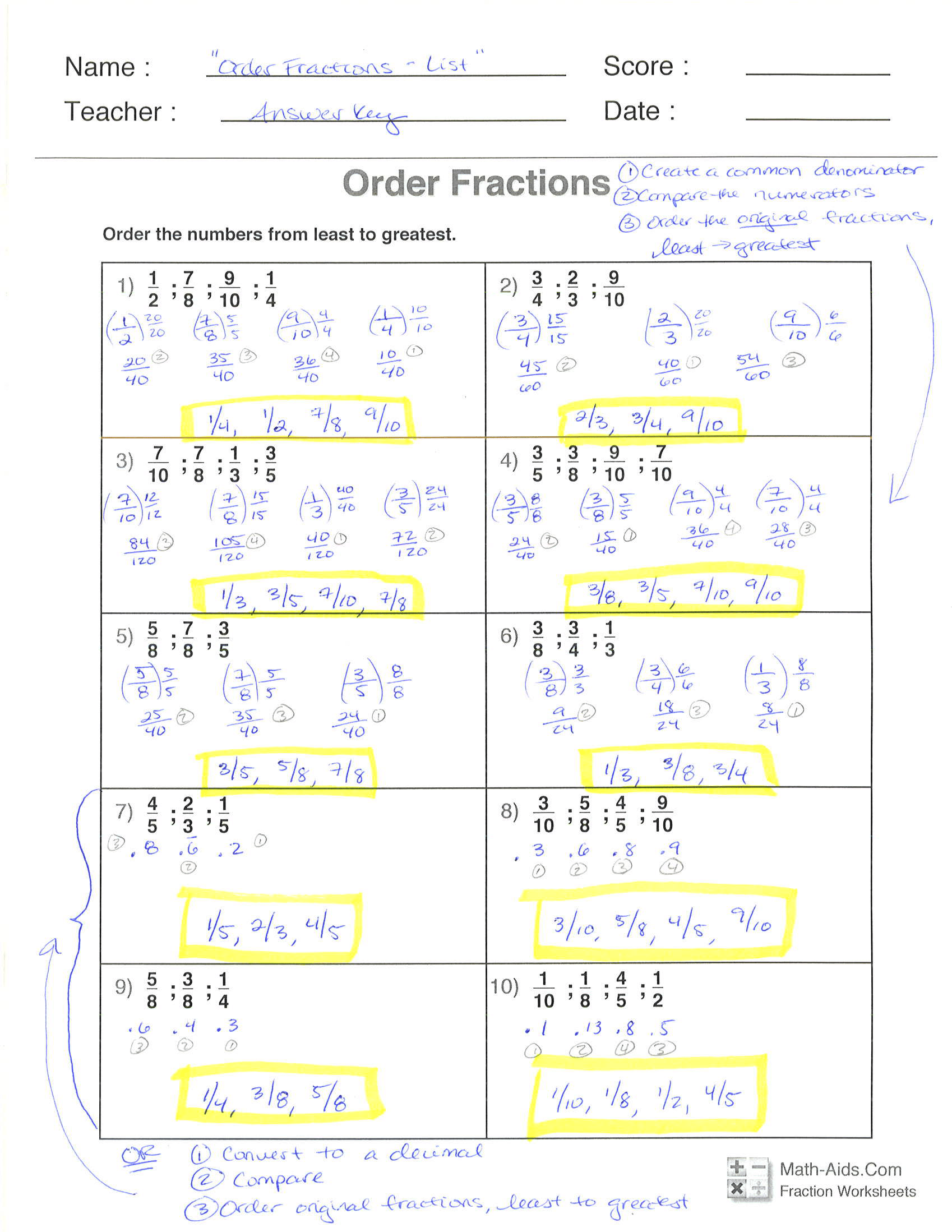
This calculator reduces the improper fraction to lowest terms by dividing numerator and denominator by the greatest common factor ( GCF).When possible this calculator first reduces an improper fraction to lowest terms before finding the mixed number form.Įxample: Convert the improper fraction 45/10 to a mixed number. With 1 as the numerator and 3 as the denominator, the fraction part of the mixed number is 1/3. Divide 16 by 3: 16 ÷ 3 = 5 with remainder of 1.This is the fraction part of the mixed number.Įxample: Convert the improper fraction 16/3 to a mixed number. Use the remainder as the new numerator over the denominator.Divide the numerator by the denominator.
#Ordering fractions calculator how to#
How to Convert an Improper Fraction to a Mixed Number Examples of improper fractions are 16/3, 81/9, 525/71.

Order these fractions in ascending order:Ĭalculate the LCM of the denominators 15, 18 and 10 as 90Īnd thus, the fractions in ascending order are: 2/15 < 3/18 < 9/10ħ. Therefore, the fraction from lowest to largest isĦ. Start by calculating the LCM of denominators 4, 20 and 25 = 100 Order the fractions below from the lowest to the largest. Order the following fractions in ascending orderĭetermine the LCM of the denominators as 18.Ħ/18 < 9/18< 12/18 and thus the fraction in ascending order ĥ. Now fractions in ascending order = 2/5 < 4/7 < 5/6Ĥ. Order the fraction from the least to the largest. Now arrange the fractions in ascending order as:ģ. Arrange the fractions below in ascending order:ĭetermine the LCM of 5, 7 and 25 which is 175 Since the numerator 4 is remaining in all fractions, order the fraction as follows:Ģ. Now that all the fraction shares a common denominator, it is easier to place the fractions in ascending order by comparing their numerators.īy comparing the numerators, the final answer becomes 1/4, 1/2, 7/12, 2/3, 5/6.ġ.Arrange the following in ascending order: The next step is to rewrite each fraction as an equivalent fraction with the denominator 12.The least common multiple of denominators 2, 3, 12, 6 and 4 is 12.of two numbers at a time and check whether the other denominators are factors of the calculated L.C.M. Calculate the least common multiple of all the denominators.And in this case, the denominators are 2, 3, 12, 6, and 4. First, identify all the denominators of the fractions.Let’s understand this with the help of examples.Īrrange the following fractions in ascending order: Ordering Fractions from Least to Greatest (h2) There are also other methods of ordering fractions, such as calculating their percentages.įor example, we can solve the problem by expressing it as a percentage. There the final answer is 4/5, 3/4, 1/2 and 3/8

Now arrange the decimals in descending order. Since all the fractions have zero in their unit’s digit, compare them by checking the tenths digit.

Changing Fractions to Decimals and then OrderingĬonversion of fractions to decimals is another method of ordering fractions.Īrrange the following fractions in ascending order.įirst convert all the fraction to decimals as shown below: Yet 8 and 12 have several other common multiples however, 24 is the lowest. For example, 24 is the least common multiple of 8 and 12. Common denominators are created by using common multiples of the two numbers. Focus Number patterns Ascending and descending order Place value Rounding off. Ordering Fractions using Common Denominatorįractions can be compared and ordered by determining their equivalent fractions with the common denominator. Unit Common Fractions Unit 1 Common Fractions Unit 2 Decimal Fractions. Changing fraction to decimals and then ordering.There are two common methods of ordering fractions. Ordering fraction means arranging fractions from the smallest to the largest (ascending order) or largest to smallest (descending order). Ordering Fractions – Explanation & Examples How to Order Fractions?


 0 kommentar(er)
0 kommentar(er)
